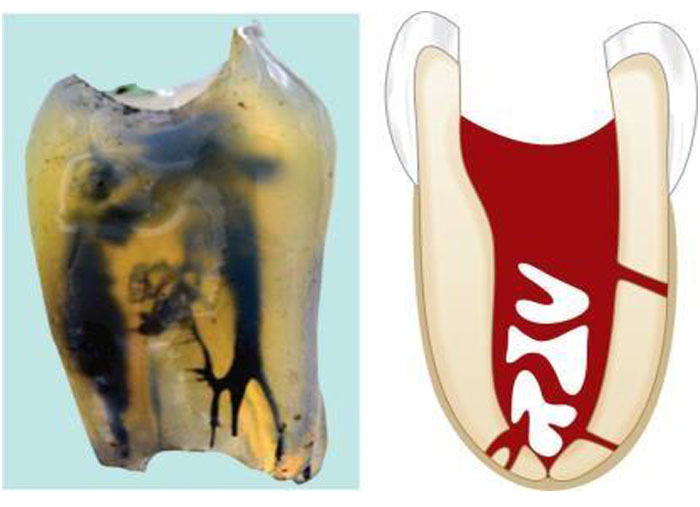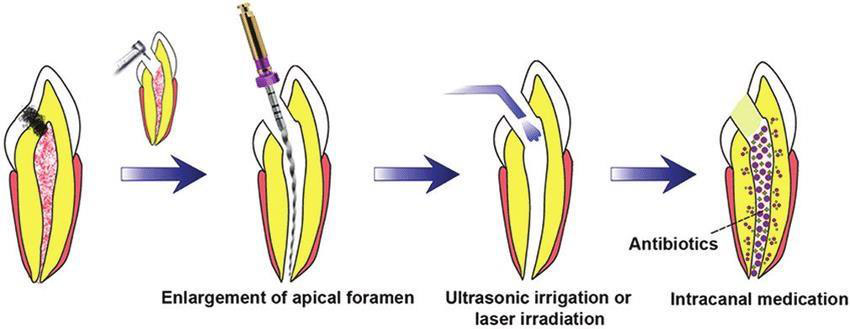- NEED HELP? CALL US NOW
- +919995411505
- [email protected]
Intra Canal Medicaments

“Instruments’ shape, irrigants clean.”
Introduction
- Every root canal system has spaces that cannot be cleaned mechanically. The only way to clean webs, fins and anastomoses is through effective use of irrigation solution.
- An agent used as an adjunct to be cleaning and shaping for prevention or treatment of apical periodontitis.
- Intracanal medicaments have a long history of use as interim appointment dressings.

An intracanal medicament is used to :
- eliminate any remaining bacteria after canal instrumentation;
- reduce inflammation of periapical tissues and pulp remnants;
- render canal contents inert and neutralize tissue debris;
- act as a barrier against leakage from the temporary filling;
- help to dry persistently wet canals
Desirable Requirements for an Intra canal medicament

- Prolonged Anti-microbial properties
- Effective germicide and fungicide
- Non irritating to pulpal tissue
- Remain stable in solution
- Have low surface tension
- Not interfere with repair of periapical tissue
- Non-staining to tooth
- Be capable of inactivation in the culture media
- Not induce immune response
Functions
- Destroy the remaining bacteria and limit the growth of new arrivals.
- In cases of apical periodontitis, for example, in cases of inflammation caused due to over instrumentation.
Indications
► Act as barrier against leakage from interappointment dressing
► Remove the Remaining micro organisms from the pulp space
► Dry the weeping canals
► Neutralize the tissue debris
Types of Intra Canal Medicaments
A. According to Grossman
- Essential Oils.
- Eugenol
- Phenolic Compound.
- Phenol
- Para Chlorophenol
- CPC
- Formocresol
- Glutaraldehyde
- Cresatin
- Halogens.
- Sodium Hypochlorite
- Iodides
- Quaternary Ammonium Compounds
- 9-amino Acridine
B. According to DCNA
- Phenolics.
- Eugenol
- CMCP
- PCP
- CPC
- Metacresylacetate (Cresatin)
- Cresol
- Creosote (Beechwood)
- Thymol
- Aldehydes.
- Formocresol
- Gluteraldehyde
- Halides.
- Sodium Hypochlorite
- Iodine
- Potassium Iodide
- Steroids.
- Calcium Hydroxide.
- Antibiotics.
- Combinations.
Notes
- If root canal treatment is not completed in a single appointment, antimicrobial agents are recommended for intracanal antisepsis to prevent the growth of microorganisms between appointments.
- In the past, numerous antimicrobial agents have been used, provided relatively short- term antisepsis. These included traditional phenolic and fixative agents such as: camphorated monochlorophenol, formocresol.
- The current intracanal dressing of choice is calcium hydroxide. Studies have shown calcium hydroxide to be an effective antimicrobial agent.
Related posts
April 10, 2025
April 9, 2025
April 4, 2025




